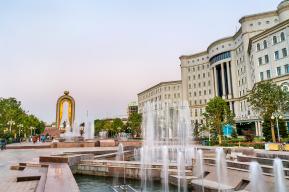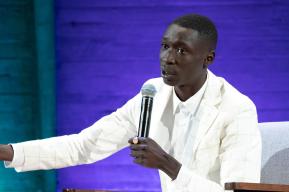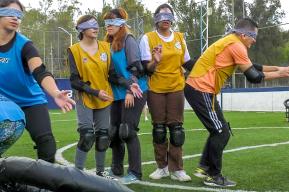On 2 May 2023, Director-General Audrey Azoulay participated at the UN Security Council Arria-Formula meeting on the need to protect cultural heritage in armed conflict, in UN headquarters (New York City).
The Director-General mentioned that when heritage is targeted, it is always what it represents that is actually targeted: another narrative of societies, often more diverse, more complex; a narrative in which everyone can find their place, some in relation to others, and not against each other.
She emphasized that the protection of heritage must be a fundamental dimension of the maintenance of international peace and security. As such, the meeting represents a further affirmation of this, following the decisions taken in recent years.
The adoption, in 2017, of UN Security Council Resolution 2347 is a particularly significant resolution, as it broadened the scope of protection of cultural heritage in times of conflict, with a universal geographical scope.
Furthermore, Director-General also referred to how this resolution supports UNESCO's historic advocacy of the protection of cultural heritage as a priority in conflict.
When heritage is targeted, it is always what it represents that is actually targeted.

UN Security Council Arria Formula meeting

UNESCO has played a key role in the construction of a normative architecture to ensure this protection, as early as 1954, with the Hague Convention. Since then, this normative architecture has continued to evolve in order to become more effective.
It is in this spirit that the 1970 Convention against Illicit Trafficking of Cultural Property was conceived. It is also the reason why the 1954 Convention was supplemented by a second protocol in 1999, with specific operational instruments and a more clearly defined liability regime.
Director-General mentioned that today, it is still necessary to update and modernise it, that is why a new mechanism for monitoring the state of cultural property will be proposed next December, which it will deal in particular with the use of satellite imagery, which UNESCO has been using since 2014 with UNITAR and UNOSAT in Iraq, Syria, Yemen, Nepal and more recently in Ukraine.
Finally, Director-General mentioned that UNESCO has been asked to contribute to the implementation of the mandate of the International Criminal Court in relation to the deliberate destruction of heritage, now recognised as a war crime with a first conviction in 2016. UNESCO also formalised its cooperation with the OTP by the end of 2017.
This normative component is essential; and UNESCO implements it in a tangible way by placing heritage preservation at the heart of its actions, as for example in Ukraine, Yemen and Iraq, three large-scale operations that the Organization is currently conducting.
Protecting heritage is not about stones, it is about sharing hope, rebuilding trust in our shared humanity, said the Director-General, showing some concrete examples of UNESCO's action in Mosul (Iraq) and in Yemen, where the protection and rehabilitation of cultural sites is integrated in the recovery process.
Iraq
"Reviving the spirit of Mosul" is the biggest initiative launched since UNESCO was created. It was launched by Audrey Azoulay in 2018 with one ambition: to put the human dimension at the heart of reconstruction efforts, through heritage, cultural life and education.
With the significant support of the United Arab Emirates and the European Union, and a dozen other partners, UNESCO has mobilised US$105 million to rebuild the emblematic monuments but also 124 heritage houses bringing life back to the historic center. The initiative shows how multilateralism can bring about tangible changes in people’s lives on the ground.

Heritage has been a driving force for development here, with 5,000 jobs created and 1,600 young people trained. And it has brought a strong message to the heart of the city, that of a history of diversity and cultural pluralism. Thus allowing the people of all faiths to come together and work together to recover their city and see it as it was before.
'Revive the Spirit of Mosul' it is an initiative that brings the light back to Mosul.
In addition, UNESCO has allocated funds for the renovation of schools and for the psychosocial support of pupils to give hope to the new generation, and for the revival of cultural life and festivals to give new momentum to artists and creators.
Yemen
UNESCO has been taking concrete action since 2018 in the area, with almost $35 million mobilised. With the support of the European Union in particular, UNESCO has rehabilitated more than 500 historic buildings and houses in the cities of Aden, Sana'a, Shibam and Zabid, and is about to extend these efforts to eight other governorates.
In total, by 2026, nearly 15,000 young Yemenis will have found employment opportunities in heritage sites. An example of this is Nuha Abdullah Yahya Albaqqal, who at age of 24 has been able to participate in the field Training at the Architectural Training Centre and witnessed architects supervising the sites and how the works are carried out.
During my first field visit, I was proud to be a confident Yemeni woman who can supervise workers or builders. I proved to my community that Yemeni women can work with confidence in any field.
The World Heritage Committee has also inscribed the archaeological site of Marib (Yemen) on the List of World Heritage in Danger on 25 January 2023, which will result in mobilizing the international community to implement a protection plan for the site.











